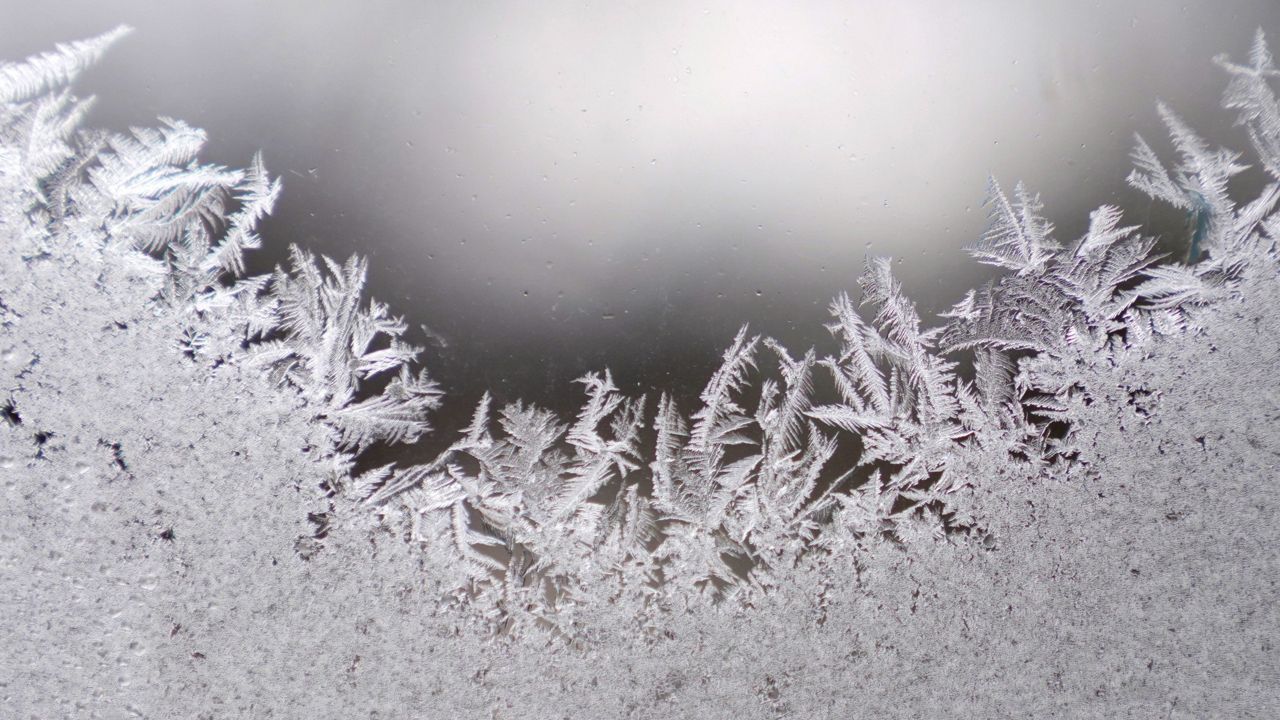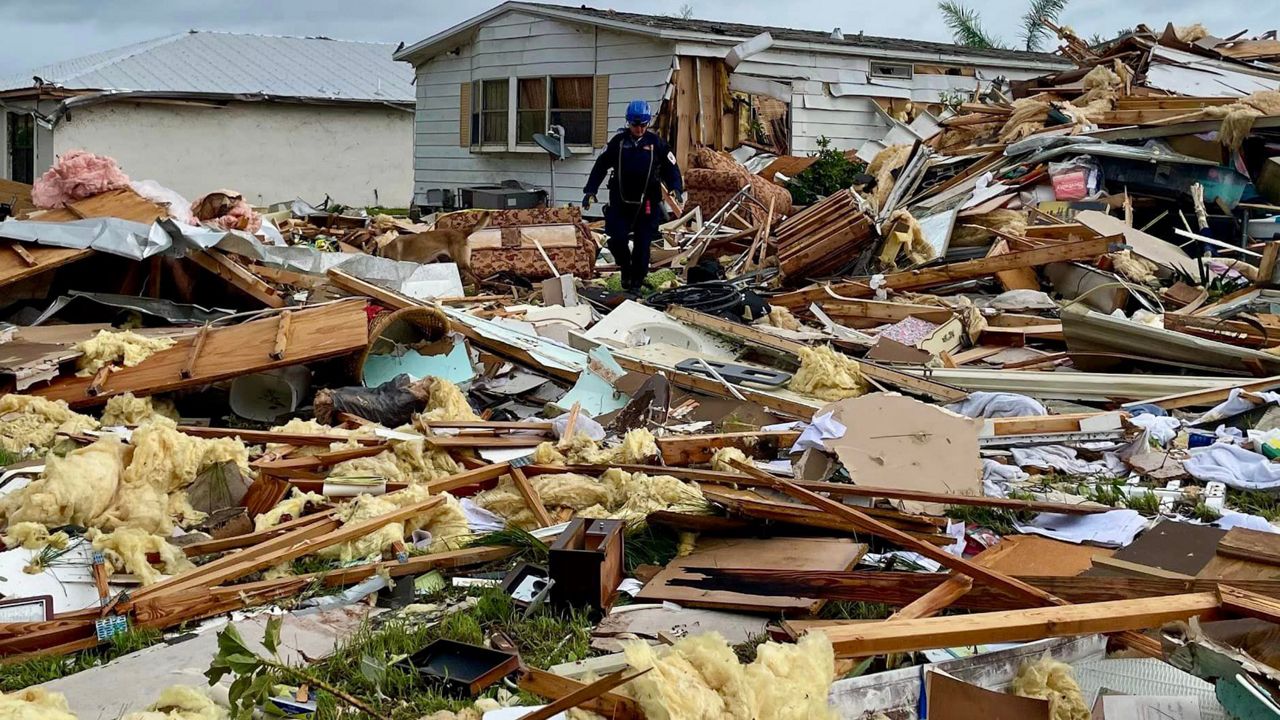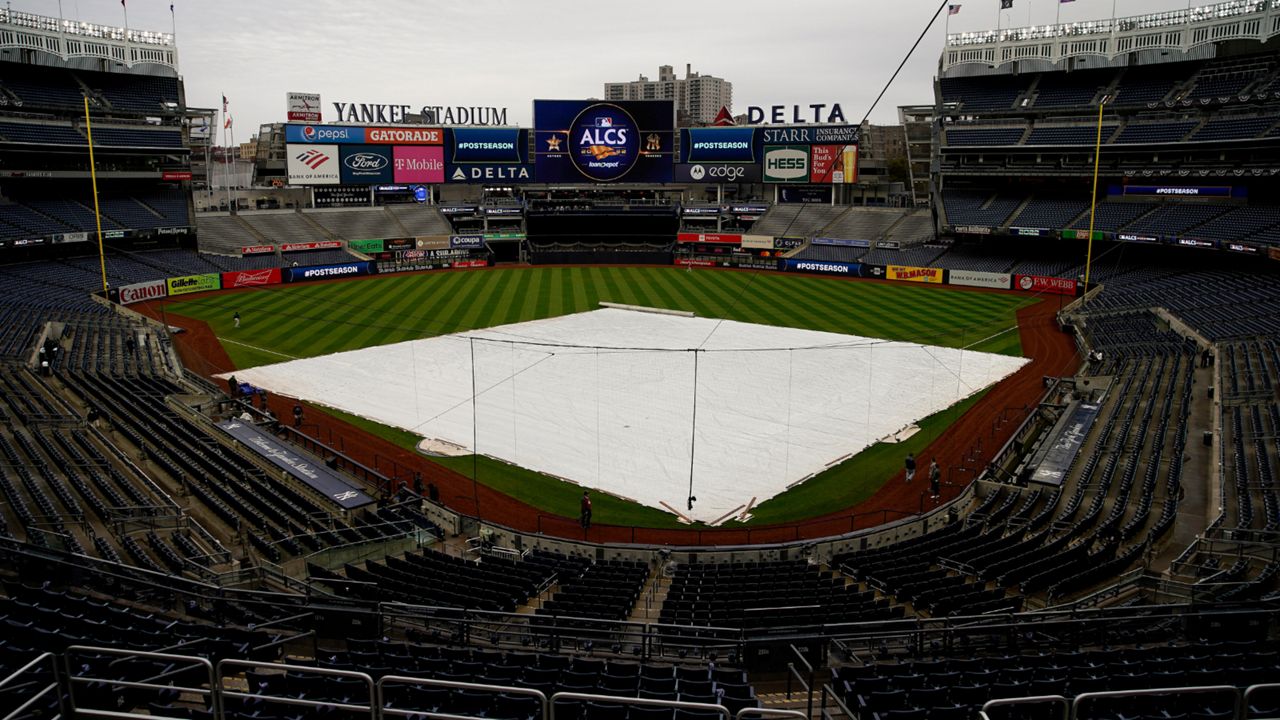The coldest air in four years is moving into Florida, and it took a lot for it to get here.
Florida is usually protected from these extremely cold conditions because of its geography and location.
Water surrounds the sunshine state on three sides. These bodies of water are often warmer than land at night during the winter, helping warm air masses that move in.
Florida often sees areas of high pressure develop in the Atlantic. These high pressure areas often help divert cold air away from the area.
But this time, neither defense protected the state from the cold.
How did this happen to sunny and warm Florida?
First, for cold air to enter the state, it has to have a way in. A strong cold front arrived on Friday and quickly plowed through the state.
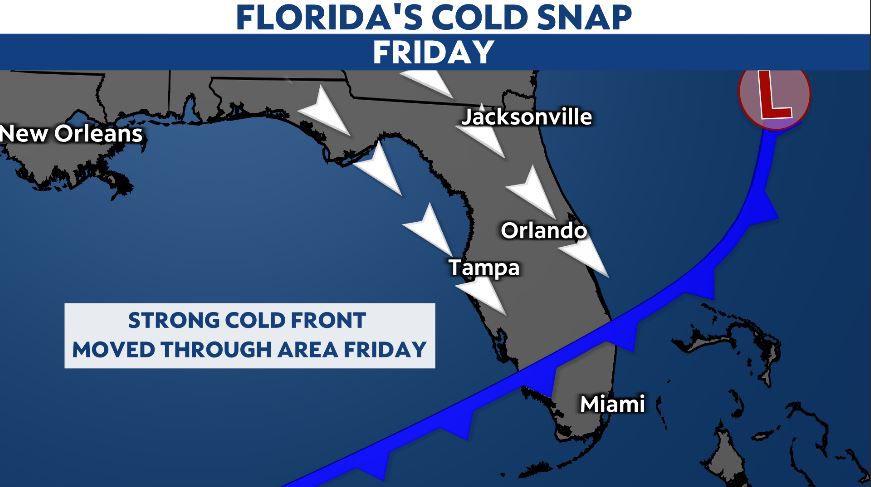
The front switched the winds to the northwest. This change in the wind helped open the door for cold air to push southward.
Second, we need cold air in place upstream.
Frigid air has been sitting in the Midwest and parts of the Southeast for the last several days. Highs on Friday for many in this region were in the 20s and 30s.
Now that we have a way for the cold air to get in, and have it in place, we need a driving force to push the cold air into Florida.
That’s exactly what we have this weekend with a nor’easter and a ridge of high pressure.
As the nor’easter walks up the Atlantic coast toward New England, a ridge of high pressure will build and descend into the Gulf of Mexico. A pressure gradient will develop between these two systems, creating strong winds on Saturday.
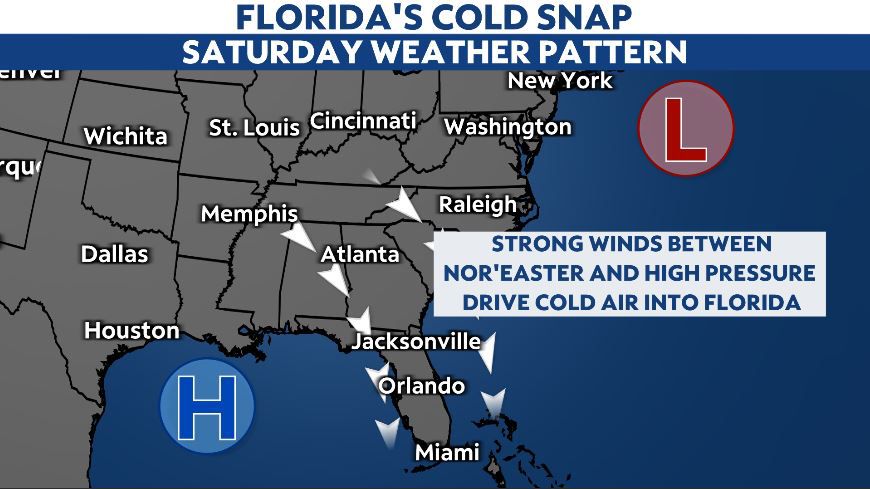
These strong winds will shove the cold air from the Midwest and Southeast down the Florida peninsula, resulting in the cold conditions.
Morning lows on Sunday are on track to be in the 20s and 30s across much of the state. This is the coldest air many communities have seen since January 2018.
There is good news for warm weather lovers. The cold snap will be short-lived.
Temperatures will rebound quickly next week, and by Tuesday highs will be back in the 70s.
So, while Florida can see freezing temperatures, it takes a lot for the cold air to make the trip all the way to the sunshine state.




